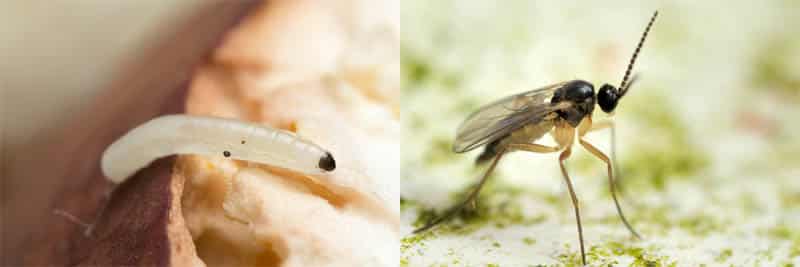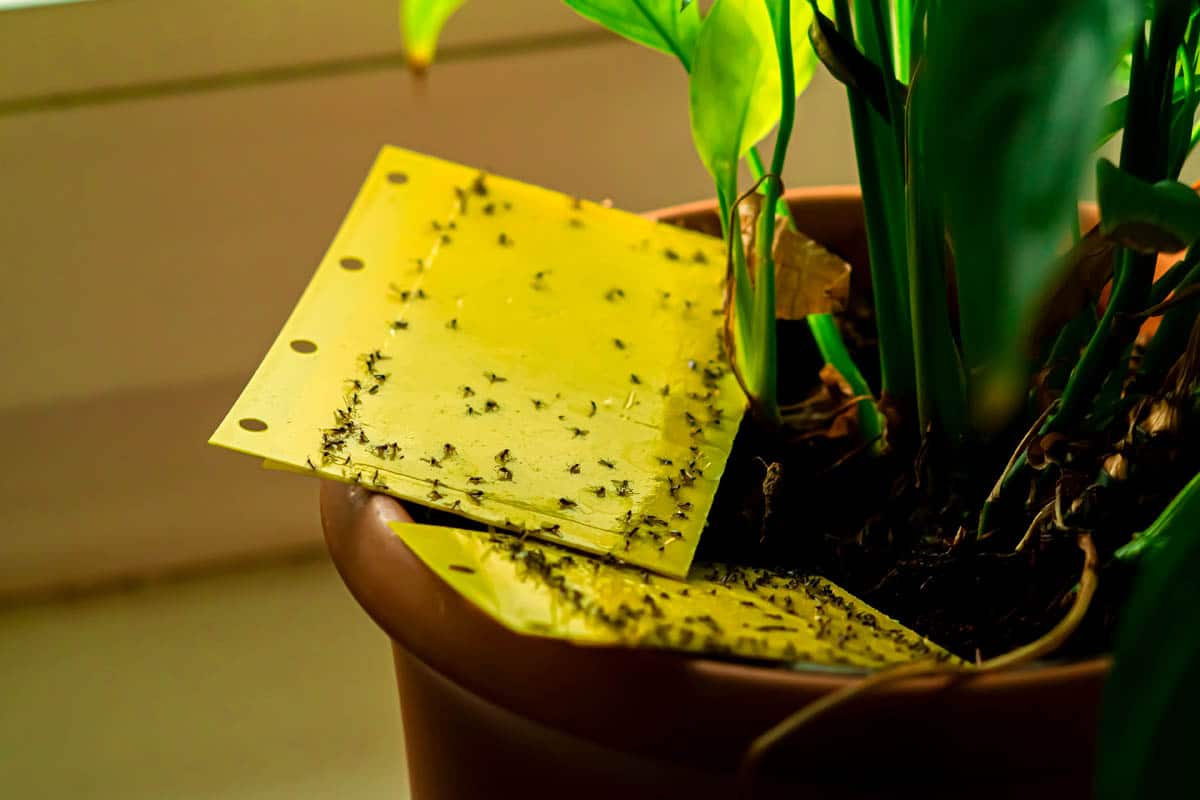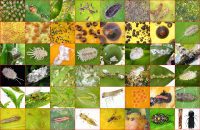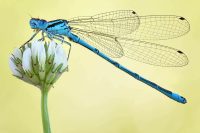Fungus gnats are small flies of lower Diptera (fly) made up of several genera belonging to the Sciaroidea family. These small flies are one of the most common indoor pests and are attracted to moisture and organic matter in household plants.
The complete fungus gnat lifecycle takes four weeks and occurs in four stages; eggs > larvae (4 stages) > pupae > adult
Adult fungus gnats have a mosquito-like appearance, with a slender body approximately 3 mm in length, and long legs and can be found flying close to potted plants, near windows or other light sources. Larvae (maggots) have a cylindrical shape, a white/translucent body, no legs and a distinctive black head.
The distribution of fungus gnats is worldwide and can infest greenhouses, commercial mushroom growers, nurseries and household plants. Their preferred habitat is rich, moist soil.
Species of fungus fly:
- Bradysia
- Mycetophilidae
- Sciaridae
- Ditomyiidae
- Keroplatidae
- Bolitophilidae
- Diadocidiidae
- Keroplatidae
- Lycoriella
Life cycle of fungus gnats
The adult female lays between 100 – 300 eggs on top of the soil which hatch into larvae after 4-6 days. Larvae feed on fungi and organic matter in the soil, as well as roots and root hairs, which can stung plant growth, kill seedlings and introduce pathogens. After 12 – 14 days, larvae pupate near the surface of the soil for 3 – 7 days, before emerging as an adult fungus gnat. A few hours after emerging, the adult fruit fly mates, and lays between 100 – 300 eggs in damp soil. Adult fungus gnats don’t directly damage plants as they feed on water and plant nectar, but may disseminate fungal spores and other pathogens. One study identified eight species of fungus on the bodies of trapped adult fungus gnats.
Signs of fungus gnats

Adult fungus gnats can be found flying close to the soil of affected plants, their appearance is similar to their close relatives, the mosquito. Larvae live on the surface of the soil and have long, slender, white bodies approximately 5 mm in length. Adult fungus gnats can be dispersed by gently tapping the plant pot.
How do fungus gnats infest houseplants?
Adult fungus gnats may fly into homes, lay their eggs and establish a new colony. Larvae may be inadvertently brought into the home via potted plants. Fungus gnats are attracted to water and are especially prevalent in winter when the soil is generally damper, due to less water loss due to evaporation as well as plants having a decreased need for water.
How to get rid of fungus gnats
It can take some time and patience to combat a fungus gnat infestation, as most methods will only kill the adult or larvae, but not both. All of the methods are aimed at killing the fungus gnat in all life stages but are not harmful to plants. A multi-pronged approach is the most effective way to elimiate fungus gnats.
Traps:
- Yellow fly traps: The most common method of removal is by placing sticky yellow traps in plant pots. Fungus gnats are attracted to the colour yellow. These only kill a percentage of adult fruit flies. As each adult female can lay between 150 – 200 eggs, fly traps are not overly effective.
- Raw potato: Add several slices of raw potato to the potting mix to attract larvae, and remove and discard every 1 – 2 days.
Physical barriers:
- Sand or pebbles: Creating a physical barrier to kill larvae in the soil and prevent adult females from laying eggs on the soil. I managed to eliminate fungus gnats by adding a layer of LECA to the top of the potting mix.
Hydrogen peroxide:
- Hydrogen peroxide: Allow the top layer of soil to completely dry out and then drench with a mix of one part 3% hydrogen peroxide with 4 parts water. Reapply once a week until the fungus gnats have been eliminated.
Manual removal:
- Soil removal: If you have a small number of houseplants it may be possible to eradicate larvae by completely changing the potting mix. This should be used along with other methods to kill adult fruit flies.
Biological control:
- Hypoaspis miles mites: These soil-dwelling predatory mites feed on soft-bodied organisms, including fungus gnat larvae and pupae.
- Steinernema carpocapsae: A species of entomopathogenic nematode that feeds on fungus gnat larvae, while remaining harmless to plants. Nematodes enter the body via the mouth, anus or spiracles, and symbiotic bacteria are released, which kill the larvae.
- Bacillus thuringiensis: A soil bacterium that kills mosquito and fungus gnat larvae by producing proteins that are toxic to fungus mites by arresting the digestive system.
Insecticides:
- Pyrethrin-based plant insecticides applied to the top of the growing medium are effective at reducing fungus gnats and their larvae. Repeat applications will be necessary as new populations are continually developing. Always use insecticides specifically for plants.
Eliminate moisture:
- Allow the top 2.5 – 5 cm (1 – 2 inches) of soil to completely dry out between watering as fungus gnats thrive in moist environments.
How to prevent fungus gnats?
Always carefully inspect new plants entering the home for the presence of fungus gnats. If space allows, quarantine new purchases away from other plants for 30 – 45 days. Add some slices of raw potato and check every few days for the presence of fungus gnat larvae.
Be careful not to overwater plants, especially in winter. Only water when the top layer of soil has dried out.
Add decorative pebbles around the base of the plant to prevent female fungus gnats from laying their eggs.
Frequently asked questions
How long does it take to get rid of fungus gnats?
It can take 3 – 4 weeks to eliminate fungus gnats. It is important to break the cycle by killing each stage of the fungus gnat life cycle.
Can fungus gnats live on humans?
No, fungus gnats can’t live on humans, however, they can swarm around people, but no stage of the fungus gnat life-cycle is able to live on humans.
Where do fungus gnats lay eggs?
Fungus gnats lay eggs on top of soil or on moist, organic debris.
Are fungus gnats harmful to pets?
Fungus gnats are not harmful to pets or humans.
Julia is a writer and landscape consultant from Wollongong with a love of horticulture. She had been an avid gardener for over 30 years, collects rare variegated plants and is a home orchardist. Julia is passionate about learning and sharing her knowledge of plant propagation and plant toxicology. Whether it’s giving advice on landscape projects or sharing tips on growing, Julia enjoys helping people make their gardens flourish.




